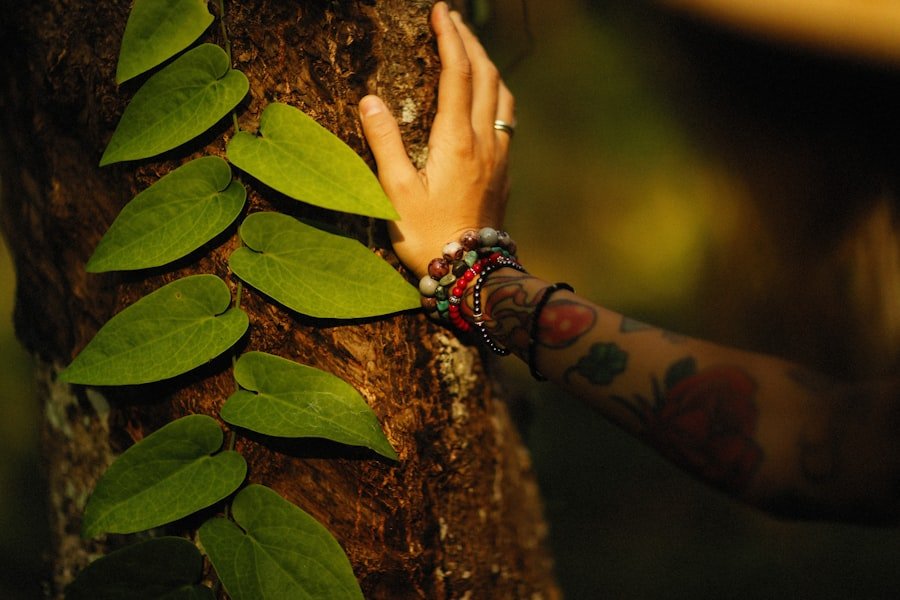In recent years, the beauty industry has witnessed a significant shift towards sustainability and eco-friendliness, driven by a growing awareness of environmental issues and consumer demand for responsible practices. Sustainable beauty rituals encompass a range of practices that prioritize the health of the planet while still delivering effective beauty solutions. This movement is not merely a trend; it represents a fundamental change in how consumers view their relationship with beauty products and the environment.
As individuals become more conscious of their ecological footprint, they are increasingly seeking out products and practices that align with their values. Sustainable beauty rituals often involve the use of natural, organic ingredients that are sourced responsibly and produced with minimal environmental impact. This shift is not only beneficial for the planet but also for personal health, as many conventional beauty products contain harmful chemicals that can be detrimental to both skin and overall well-being.
By embracing eco-friendly beauty practices, individuals can cultivate a beauty routine that nourishes their skin while also contributing to the preservation of the environment. This article will explore various aspects of sustainable beauty, from understanding the environmental impact of traditional products to practical tips for incorporating eco-friendly practices into daily routines.
Key Takeaways
- Sustainable and eco-friendly beauty rituals promote a healthier planet and a healthier you.
- Beauty products can have a significant environmental impact, from production to disposal.
- Transitioning to sustainable and eco-friendly beauty brands can reduce your carbon footprint.
- DIY beauty recipes using natural and organic ingredients are a fun and sustainable alternative to store-bought products.
- Incorporating zero-waste practices and reusable packaging into your beauty routine can make a big difference for the environment.
Understanding the Environmental Impact of Beauty Products
Resource Depletion and Pollution
Many conventional beauty products contain synthetic chemicals derived from petroleum, which contribute to greenhouse gas emissions during production and pose risks to aquatic ecosystems when washed off into waterways. The extraction of raw materials for these products often leads to habitat destruction and biodiversity loss.
The Dark Side of Ingredients
For instance, palm oil, a common ingredient in many cosmetics, is linked to deforestation in tropical regions, threatening endangered species and contributing to climate change. This highlights the need for consumers to be aware of the ingredients used in their beauty products and to choose sustainable alternatives.
Packaging: A Major Contributor to Waste
Packaging is another critical aspect of the environmental footprint of beauty products.
According to a report by the Ellen MacArthur Foundation, the beauty industry generates over 120 billion units of packaging annually, much of which is not recyclable. This staggering statistic highlights the urgent need for brands and consumers alike to rethink their approach to packaging and product consumption.
Transitioning to Sustainable and Eco-Friendly Beauty Brands

Transitioning to sustainable and eco-friendly beauty brands requires a thoughtful approach that involves research and a willingness to change long-standing habits. The first step is to identify brands that prioritize sustainability in their sourcing, production, and packaging processes. Many companies now provide transparency about their ingredients and practices, allowing consumers to make informed decisions.
For example, brands like Lush and Aveda have made significant commitments to sustainability by using ethically sourced ingredients and implementing eco-friendly packaging solutions. Moreover, consumers can look for certifications such as USDA Organic, Fair Trade, or Leaping Bunny, which indicate that a brand adheres to specific ethical standards. These certifications can serve as a reliable guide in navigating the often-overwhelming array of products on the market.
Additionally, engaging with online communities or social media platforms dedicated to sustainable beauty can provide valuable insights and recommendations from like-minded individuals who share similar values. By actively seeking out sustainable brands and supporting those that align with eco-friendly principles, consumers can contribute to a larger movement towards responsible beauty practices.
DIY Beauty Recipes using Natural and Organic Ingredients
Creating DIY beauty recipes using natural and organic ingredients is an empowering way to take control of one’s beauty routine while minimizing environmental impact. Many common beauty products can be easily replicated at home using simple ingredients found in most kitchens. For instance, a basic sugar scrub can be made by combining granulated sugar with coconut oil and a few drops of essential oil for fragrance.
This scrub not only exfoliates the skin but also avoids the use of synthetic additives commonly found in commercial scrubs. Another popular DIY recipe is a nourishing face mask made from honey and oatmeal. Honey is known for its antibacterial properties, while oatmeal soothes irritated skin.
By mixing these two ingredients into a paste and applying it as a mask, individuals can enjoy a spa-like experience at home without contributing to packaging waste or chemical exposure. Furthermore, experimenting with DIY recipes allows individuals to customize their beauty products according to their specific skin types and preferences, fostering a deeper connection with their self-care rituals.
Incorporating Zero-Waste Practices into Your Beauty Routine
Incorporating zero-waste practices into a beauty routine involves making conscious choices that minimize waste generation at every step of the process. One effective strategy is to opt for solid beauty products instead of liquid ones, as they often come with less packaging. For example, solid shampoo bars eliminate the need for plastic bottles while providing the same cleansing benefits as traditional shampoos.
Additionally, using refillable containers for lotions or serums can significantly reduce plastic waste over time. Another zero-waste practice is to repurpose containers from finished products for other uses around the home. Glass jars from creams can be transformed into storage containers for small items or even used as planters for succulents.
By creatively reusing packaging, individuals can extend the lifecycle of these materials rather than discarding them after a single use. Furthermore, adopting a minimalist approach by curating a smaller selection of high-quality products can lead to reduced consumption and waste overall, aligning perfectly with zero-waste principles.
The Benefits of Using Reusable and Refillable Beauty Packaging

The shift towards reusable and refillable beauty packaging offers numerous benefits for both consumers and the environment. Reusable containers not only reduce waste but also encourage consumers to invest in higher-quality products that are designed to last. Brands like Kjaer Weis have pioneered this approach by offering refillable compacts for makeup products, allowing customers to purchase refills instead of new containers each time they run out.
This model not only minimizes waste but also fosters brand loyalty as consumers appreciate the commitment to sustainability. Moreover, refillable packaging often leads to cost savings in the long run. While the initial investment in a reusable container may be higher than purchasing single-use products, the ability to buy refills at a lower price point can offset this cost over time.
Additionally, many brands are now incentivizing customers to return empty containers for refills or discounts on future purchases, further promoting sustainable consumption habits. By embracing reusable and refillable packaging options, consumers can play an active role in reducing plastic waste while enjoying high-quality beauty products.
Supporting Ethical and Cruelty-Free Beauty Brands
Supporting ethical and cruelty-free beauty brands is an essential aspect of embracing a sustainable beauty lifestyle. The cruelty-free movement advocates against animal testing in cosmetics, promoting alternatives that do not involve harming animals in any way. Brands such as Too Faced and Urban Decay have made significant strides in this area by committing to cruelty-free practices and obtaining certifications from organizations like PETA or Leaping Bunny.
In addition to cruelty-free practices, many ethical brands prioritize fair labor practices and sustainable sourcing of ingredients. For instance, companies like Ethique focus on creating solid beauty bars that are not only cruelty-free but also made from ethically sourced ingredients that support local communities. By choosing to support these brands, consumers contribute to a more humane and sustainable industry while also encouraging other companies to adopt similar practices.
This collective effort can lead to meaningful change within the beauty sector as consumer demand drives brands towards more ethical standards.
Embracing Minimalist Beauty and Reducing Product Consumption
Embracing minimalist beauty involves simplifying one’s routine by focusing on essential products that deliver maximum results without unnecessary clutter. This approach encourages individuals to evaluate their current collection of beauty products critically and identify items that truly serve their needs versus those that are simply taking up space. By adopting a minimalist mindset, consumers can reduce their overall consumption while still achieving effective results.
One practical way to embrace minimalism in beauty is through the concept of multi-use products. For example, a tinted moisturizer can serve as both skincare and makeup in one step, reducing the need for multiple separate products. Similarly, lip balms that double as cheek tints can streamline routines while providing versatility.
By prioritizing quality over quantity and selecting multifunctional items, individuals can create an efficient beauty regimen that aligns with sustainable principles.
Exploring Sustainable Beauty Tools and Accessories
Sustainable beauty tools and accessories play a crucial role in enhancing eco-friendly beauty routines while minimizing waste. Traditional disposable items such as cotton pads or plastic applicators contribute significantly to landfill waste; however, there are now numerous sustainable alternatives available on the market. For instance, reusable cotton rounds made from organic cotton or bamboo provide an eco-friendly option for makeup removal without generating waste.
Brands like EcoTools offer brushes made from recycled materials that perform well without compromising on quality or effectiveness. By choosing sustainable tools and accessories, consumers not only support environmentally friendly practices but also enhance their overall beauty experience through durable and effective products.
Tips for Sustainable Haircare and Skincare Practices
Sustainable haircare and skincare practices are essential components of an eco-friendly beauty routine that extends beyond product selection alone. One effective tip is to adopt water-saving techniques during hair washing routines by using dry shampoo between washes or rinsing hair quickly instead of letting water run continuously. This practice conserves water resources while still maintaining clean hair.
In skincare, individuals can focus on creating a routine that emphasizes hydration and nourishment rather than excessive product layering. Using natural oils such as jojoba or argan oil can provide moisture without relying on synthetic ingredients or excessive packaging. Additionally, incorporating seasonal ingredients into skincare routines—such as using fresh aloe vera gel during summer months—can enhance effectiveness while promoting sustainability through local sourcing.
Embracing a Sustainable and Eco-Friendly Beauty Lifestyle
Embracing a sustainable and eco-friendly beauty lifestyle requires commitment but offers numerous rewards for both individuals and the planet alike. By understanding the environmental impact of traditional beauty products and making conscious choices about brands, ingredients, and practices, consumers can significantly reduce their ecological footprint while still enjoying effective beauty solutions. From DIY recipes using natural ingredients to supporting ethical brands committed to cruelty-free practices, every small change contributes to a larger movement towards sustainability within the industry.
As awareness continues to grow around environmental issues related to beauty consumption, it becomes increasingly important for individuals to advocate for change within their communities and support brands that prioritize sustainability at every level—from sourcing materials responsibly to implementing innovative packaging solutions. Ultimately, embracing sustainable beauty is not just about personal choices; it’s about fostering a collective commitment towards creating a healthier planet for future generations while redefining what it means to engage with beauty in an environmentally conscious way.









